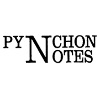Abstract
Since its publication in 1960, Thomas Pynchon's short story "Entropy" has been situated within critical attempts to read Pynchon's novels as literary articulations of the thermodynamic principle of entropy. Indeed, entropy and related issues are so thoroughly embedded in Pynchon criticism that an exhaustive index of "entropic" readings might closely approximate a list of some of the most frequently cited responses to his fiction. Typical of such approaches is William M. Plater's comment that Pynchon "examines the philosophical world as if it were a closed system in which facts, rather than molecules, are distributed according to the laws of thermodynamics" (1). Similarly, Tony Tanner states that "Thomas Pynchon made his intentions clear from the outset. The title of his first important short story is I Entropy I and … his work is certainly about a world succumbing to entropy … 11(153). Peter Bischoff generalizes: "When Thomas Pynchon gave the title I Entropy' to his second published short story, he furnished … the key for the interpretation of this story which is programmatic for his entire work." Anne Mangel agrees in regarding entropy as the basic principle informing Pynchon's narrative technique: "Pynchon's use of scientific concepts and disorder in his fiction holds a dual excitement, for not only does it sever him from a previous, more rigid and static kind of writing, but it also links him with contemporary artists working in other media who incorporate scientific ideas and seek randomness in their art"(207-08). Such statements assert rather than demonstrate randomness, and ultimately lend support to Gore Vidal's dismissive comment that "The imaginative writer can never be serious unless, like Mr. Thomas Pynchon, he makes it clear that he is writing about Entropy and the Second Law of Thermodynamics and a number of other subjects that he picked up in his freshman year at Cornell."
How to Cite:
Schuber, S. P., (1983) “Rereading Pynchon: Negative Entropy and "Entropy"”, Pynchon Notes 13, 47-60. doi: https://doi.org/10.16995/pn.409
Downloads:
Download PDF

